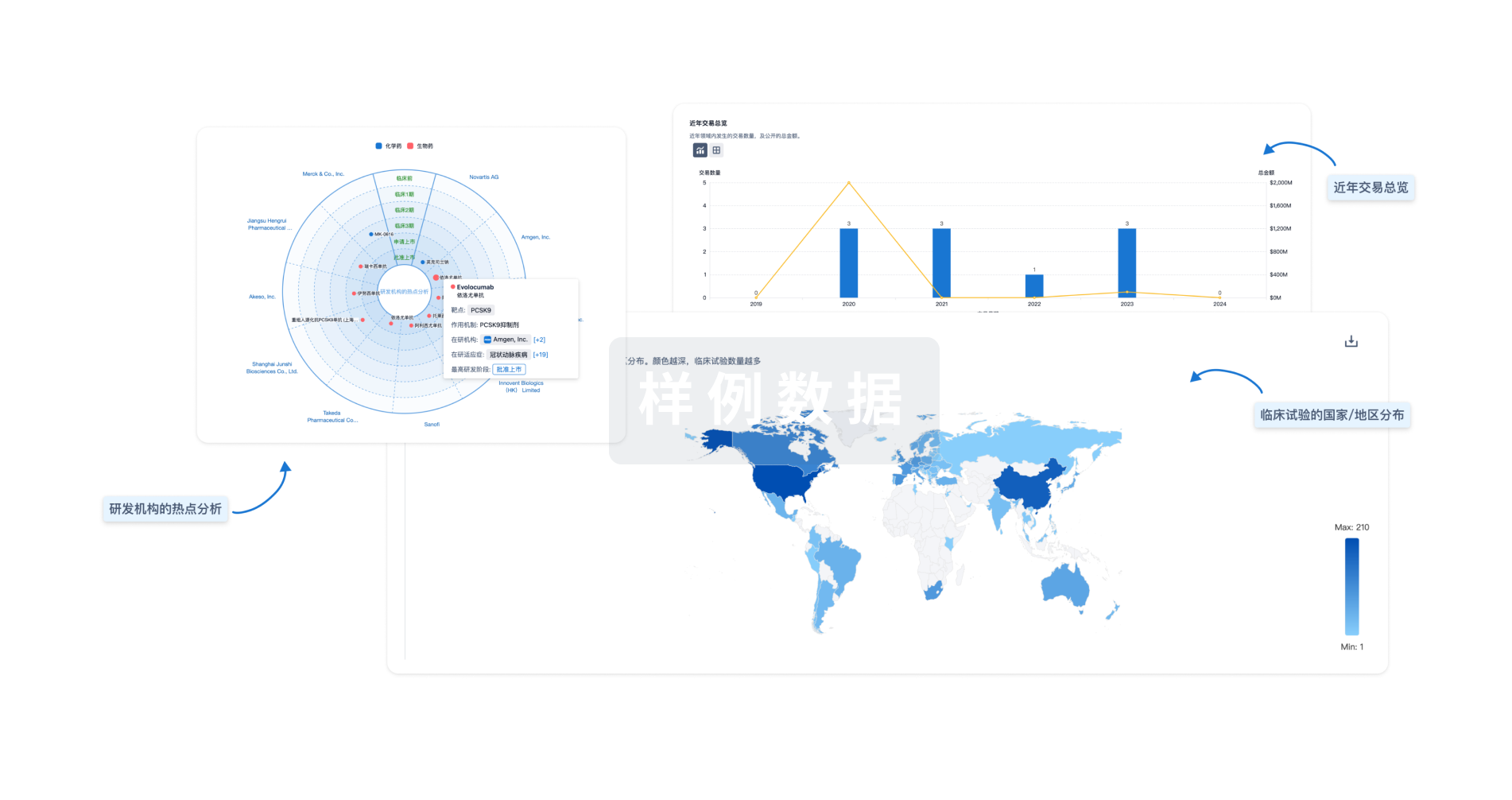预约演示
更新于:2025-05-07
RAPGEF1
更新于:2025-05-07
基本信息
别名 C3G、CRK SH3-binding GNRP、GRF2 + [4] |
简介 Guanine nucleotide-releasing protein that binds to SH3 domain of CRK and GRB2/ASH. Transduces signals from CRK to activate RAS. Involved in cell branching and adhesion mediated by BCAR1-CRK-RAPGEF1 signaling and activation of RAP1 (PubMed:12432078). Plays a role in the establishment of basal endothelial barrier function. Plays a role in nerve growth factor (NGF)-induced sustained activation of Rap1 and neurite outgrowth. |
关联
100 项与 RAPGEF1 相关的临床结果
登录后查看更多信息
100 项与 RAPGEF1 相关的转化医学
登录后查看更多信息
0 项与 RAPGEF1 相关的专利(医药)
登录后查看更多信息
675
项与 RAPGEF1 相关的文献(医药)2025-07-01·Plant Physiology and Biochemistry
The activity annotation of peach glycosyltransferase PpUGT78B based on engineering bacterial anthocyanin biosynthesis
Article
作者: Jing, Ruyu ; Han, Yan ; Zhao, Xulei ; Dong, Lemeng ; Wang, Pengfei ; Chen, Haijiang ; Wang, Jiahui ; Baz, Naila Mir ; Cao, Hongbo ; Wu, Pengyu
2025-06-01·Pediatric Nephrology
Efficacy of complement inhibition with pegcetacoplan in children with C3 glomerulopathy
Article
作者: Ardissino, Gianluigi ; Mancuso, Maria Cristina ; Nittoli, Teresa ; Montini, Giovanni ; Mastrangelo, Antonio ; Tedesco, Francesco ; Griffini, Samantha ; Grovetti, Elena ; Cugno, Massimo
2025-05-01·Food Research International
Molecular interactions and binding mechanisms of the homogalacturonan and rhamnogalacturonan-I fractions of pectin and different anthocyanins
Article
作者: Li, Xingyi ; Wang, Jun ; Yan, Jiahui ; Xing, Ying ; Xu, Huaide ; Kou, Liping ; Ji, Shichun
31
项与 RAPGEF1 相关的新闻(医药)2025-04-08
刚刚,NMPA发布2025年04月08日药品批准证明文件送达信息,本批次共有100个受理号获批,其中多款新药获准上市:恒瑞医药的硫酸艾玛昔替尼片新适应症获批上市,用于对局部外用治疗或其他系统性治疗应答不充分或不耐受的成人和12岁及以上青少年中度至重度特应性皮炎患者。艾玛昔替尼是一种高选择性的JAK1抑制剂,2025年3月21日,硫酸艾玛昔替尼片在中国获批上市,用于对一种或多种TNF抑制剂疗效不佳或不耐受的活动性强直性脊柱炎成人患者;3月31日,该药获NMPA批准用于治疗成人中重度活动性类风湿关节炎患者。这次是该产品在中国获批的第三项适应症。此外,由苏州盛迪亚生物(恒瑞子公司)申报的的夫那奇珠单抗注射液新适应症获批上市,用于常规治疗疗效欠佳的活动性强直性脊柱炎成人患者。夫那奇珠单抗是恒瑞医药自主研发的一款重组人源化 IgG1 亚型抗 IL-17A 单克隆抗体,2024 年 8 月,夫那奇珠单抗国内首次获批用于治疗适合接受系统治疗或光疗的中重度斑块状银屑病成人患者。豪森药业引进的枸橼酸艾瑞芬净片获批上市,用于用于成年和初潮后女性外阴阴道念珠菌病(VVC)的治疗。据公开资料显示,艾瑞芬净(ibrexafungerp)是一款全球首创、作用机制全新的第四代新型三萜类抗真菌剂,与前三代药物相比,ibrexafungerp抗菌谱更广、给药途径更佳(可注射、口服)、安全性更好。2021年6月,ibrexafungerp获FDA批准上市,用于治疗霉菌性阴道炎,是20年来首次批准的广谱抗真菌药物。2021年2月,豪森药业与Scynexis签订战略合作协议,获得Ibrexafungerp在大中华区(包括香港、澳门及台湾)的开发和商业化独家权益。诺华的盐酸伊普可泮胶囊新适应症获批上市,用于治疗成人C3肾小球病(C3G)以降低蛋白尿。据诺华新闻稿显示,盐酸伊普可泮胶囊是目前首款且唯一选择性靶向C3G病因的药物,能帮助患者有效控制蛋白尿,稳定eGFR(估算肾小球滤过率)。这是诺华加码布局肾脏病治疗领域以来,在国内获批的第一个肾脏病治疗相关适应症。也是盐酸伊普可泮胶囊继阵发性睡眠性血红蛋白尿症(PNH)后,第二个在中国获批的适应症。完整批件信息如下:
上市批准合格传染病产品专利到期引进/卖出临床3期
2025-04-03
·医脉通
今天的医疗圈发生了哪些与你有关的大事?更新、更全的医学动态3分钟一网打尽********今日关键词:陆道培院士,精神卫生服务,真菌感染检测和治疗报告来源 | 医脉通作者 | 晚报君新闻60秒➤沉痛悼念!“亚洲骨髓移植之父”陆道培院士逝世@北京大学人民医院 中国共产党党员、中国农工民主党党员,中国工程院院士,我国著名血液病学和造血干细胞移植专家,政协第九届全国委员会常委、政协第九届北京市委员会副主席,北京大学人民医院原内科主任,北京大学血液病研究所创始所长陆道培同志因病医治无效,于2025年4月2日16时58分在北京逝世,享年93岁。陆道培院士曾于1964年成功完成国内首例异体同基因骨髓移植,该病例是亚洲第一例、世界第四例移植成功病例,更是全球范围内术后生存时间最长的成功案例。陆道培院士的辞世是我国医学界、教育界和科学界的巨大损失,他的贡献永载史册,他的精神永存人间!沉痛悼念并深切缅怀陆道培院士!➤出生医院倒闭,女子被要求“亲子鉴定”?官方回应!@央广网 近日,郑州刘女士为儿子办理户口迁移时遭遇难题。2008年出生的儿子虽有正规出生证明,但因出生医院早已关停,相关部门查不到出生档案,无法验证证明真伪。郑州市管城区妇幼保健服务中心工作人员告诉刘女士,目前只能通过亲子鉴定证明亲缘关系。4月2日,管城区卫健委工作人员联系刘女士,表示将协调一家具有司法鉴定资质的医疗机构,为刘女士进行亲子鉴定,协助其办理子女落户手续。➤原遵义医学院党委书记石京山接受纪律审查和监察调查@贵州省纪委监委网站 4月3日,据贵州省纪委监委网站发布,原遵义医学院党委书记石京山涉嫌严重违纪违法,目前正接受贵州省纪委监委纪律审查和监察调查。公开信息显示,石京山是贵州省中药现代化专家组专家,曾任遵义医学院院长、党委书记,中国药理学会副理事长。政策60秒➤今年起施行!国家卫健委发布《乡镇卫生院医用装备配置标准》@国家卫健委 4月1日,国家卫生健康委发布推荐性卫生行业标准《乡镇卫生院医用装备配置标准》,规定了乡镇卫生院医用装备(不含中医药服务装备)配置的基本原则、分类品目及数量。该标准自2025年10月1日起施行。该标准明确了22种乡镇卫生院通用医用装备配置品目,包括无创血压测量设备、监护设备、心电图机、超声诊断仪等,以及115种乡镇卫生院专用医用装备配置品目。专用医用装备配置品目涵盖急诊(抢救)室、内(儿)科、外科、口腔科、康复医疗科、全科医疗科、检验科等16个科室的专用装备。该标准适用于所有乡镇卫生院配置医用装备,街道卫生院配置医用装备可参照执行。➤国家卫健委:精神卫生服务扩大执业医师准入范围@国家卫健委 4月2日,国家卫生健康委发布《关于开展医疗机构医师附条件注册精神卫生专业执业范围有关工作的通知》,文件主要解决了两个问题:一是县级以上医疗机构精神(心理)科医师相对不足的问题。《通知》扩大了申请范围,在县级以上医疗机构执业的医师,取得高一层次学历或者通过相应的培训、进修等,均可以申请增加注册精神卫生专业执业范围。二是医师变更或加注后需实际开展相关工作的问题。《通知》明确了相应管理要求,医疗机构需保障附条件注册精神卫生专业执业范围医师在精神(心理)科门诊、病房等工作时长及工作量;对未实际开展精神(心理)科临床工作的医师,应及时予以注销对应执业范围。此外,《通知》强化了中医类别执业医师加注相关管理要求,强调了医疗机构登记有“精神科”或精神心理相关二级诊疗科目,即可开展医师附条件注册精神卫生专业执业范围工作。医药60秒➤10年仅4款药获批,世卫组织发布首个真菌感染检测和治疗报告@人民日报健康客户端 4月1日,世界卫生组织发布首个关于真菌感染检测和治疗的报告,强调当前应对侵袭性真菌感染的药物和诊断工具严重短缺,迫切需要创新研发来填补空白。这份报告指出,过去10年,仅有4种新的抗真菌药物获得美国、欧盟或中国的监管机构批准上市。目前,有9种抗真菌药物正处于临床研发阶段,用于对抗最具健康威胁的真菌。然而,仅有3种候选药物处于临床研发最后阶段,意味着未来10年内将很少有这类药物获批。此外,尽管有22种药物处于临床前研发阶段,但考虑到早期药物研发阶段的高失败率、风险和挑战,这一数量远不能满足临床潜在需求。报告强调,目前的抗真菌治疗方案存在许多问题,包括严重副作用、频繁的药物相互作用、药物的剂型有限以及需要长期住院治疗等。与此同时,针对由重点真菌病原体引发严重感染的抗真菌药物不足,儿童适用的治疗方案尤为缺乏。➤诺华创新药物飞赫达(盐酸伊普可泮胶囊)C3G适应症在中国获批@诺华集团 诺华的口服产品飞赫达(盐酸伊普可泮胶囊)获得国家药品监督管理局(NMPA)批准,用于治疗成人C3肾小球病(C3G)以降低蛋白尿。飞赫达是目前首款且唯一选择性靶向C3G病因的药物,能帮助患者有效控制蛋白尿,稳定eGFR(估算肾小球滤过率)。这是诺华加码布局肾脏病治疗领域以来,在国内获批的第一个肾脏病治疗相关适应症。也是飞赫达继阵发性睡眠性血红蛋白尿症(PNH)后,第二个在中国获批的适应症。责编|米子封面图来源|医脉通“现在好好工作,将来有的是时间玩!”信了这话的医生,这辈子要遭老罪了该退休就退休,给年轻人腾位置!张文宏最新发声引热议,年轻医生:说出了我的心声医脉通是专业的在线医生平台,“感知世界医学脉搏,助力中国临床决策”是平台的使命。医脉通旗下拥有「临床指南」「用药参考」「医学文献王」「医知源」「e研通」「e脉播」等系列产品,全面满足医学工作者临床决策、获取新知及提升科研效率等方面的需求。☟戳这里,更有料!
高管变更疫苗
2025-04-03
药械追踪No.1 / 诺华伊普可泮新适应证获国家药监局批准上市2025年4月2日,诺华的口服产品飞赫达(盐酸伊普可泮胶囊)获国家药品监督管理局(NMPA)批准,用于治疗成人C3肾小球病(C3G)以降低蛋白尿。这是飞赫达继阵发性睡眠性血红蛋白尿症(PNH)后在中国获批的第二个适应证。C3G是一种罕见的进行性肾脏疾病。全球范围每年大约每百万人中有1-2人新确诊,且多发于青壮年,患者平均确诊年龄仅23岁。约50%的患者10年内会进展至终末期肾病(ESKD),需要进行终身透析治疗或者接受肾脏移植手术。然而,即便接受了肾移植,仍有50%-70%的患者会复发。C3G的疾病进展迅速,由于目前治疗手段有限、缺乏针对病因的特效药物,给患者带来了极大的治疗困境。免疫机制中补体旁路途径(AP)的过度活化是C3G的主要发病机制。作为一种特异性补体B因子口服抑制剂,飞赫达直击C3G主要发病机制,通过与B因子结合,选择性抑制补体旁路途径(AP)的过度活化,从而抑制一系列下游反应与下游产物的形成,最终避免因此引发的炎症和肾脏损伤。->点击文末阅读原文,解锁完整双语新闻企业动态No.1 / 渤健阿尔茨海默病反义寡核苷酸候选疗法获FDA快速通道资格2025年4月2日,渤健(NASDAQ:BIIB)宣布,其针对tau蛋白的反义寡核苷酸(ASO)候选疗法BIIB080获美国食品药品监督管理局(FDA)授予快速通道资格,用于阿尔茨海默病治疗。2019年12月,渤健基于与Ionis达成的协议,行使许可选择权获得BIIB080的全球独家开发和商业化权益。BIIB080通过特异性结合微管相关蛋白tau(MAPT)mRNA,抑制毒性tau蛋白生成,旨在阻断阿尔茨海默病核心病理进程。目前该药物正在开展全球II期临床试验CELIA研究并已完成全部患者入组,旨在评估其对早期阿尔茨海默病患者的疗效;该研究预计2026年公布关键数据。->点击文末阅读原文,解锁完整双语新闻No.2 / 强生完成对Intra-Cellular的收购,扩充神经科学管线2025年4月2日,强生(NYSE: JNJ)宣布完成对Intra-Cellular Therapies,Inc.的收购。Intra-Cellular现已成为强生公司的一部分,并将作为强生创新医学的一个业务部门运作;其普通股在纳斯达克停止交易。该交易预计将使强生2025年的销售额增长约0.8%,销售额增量约为7亿美元。此前强生在1月宣布以每股132.00美元的现金收购 Intra-Cellular所有流通股,总计约146亿美元。完成收购后,强生获得 Intra-Cellular旗下神经科学管线,包括Caplyta(卢美哌隆)、ITI-1284等。Caplyta是一种每日一次口服疗法,已获批用于治疗成人精神分裂症以及与双相情感障碍 I 型或 II 型(双相抑郁)相关的抑郁发作,可作为单药治疗或与锂或丙戊酸盐联合治疗。2025年2月,Caplyta用于成人重度抑郁症(MDD)辅助治疗的补充新药申请(sNDA)获美国FDA受理。ITI-1284是一种处于 II 期研究阶段的潜力药物,拟用于治疗广泛性焦虑障碍(GAD)和阿尔茨海默病相关精神病和激越症。->点击文末阅读原文,解锁完整双语新闻No.3 / 4.8亿美元!赛诺菲引进Nurix一款靶向降解剂2025年4月2日,Nurix Therapeutics公司(Nasdaq:NRIX)宣布,已将旗下一款未公开的管线独家授权给赛诺菲。该管线是针对一种以前不可成药的自身免疫性疾病转录因子。根据此次协议,Nurix将获得1500万美元的首付款,以及高达4.65亿美元的开发、监管和商业里程碑,以及未来销售的特许权使用费。Nurix与赛诺菲最早于2019年达成合作,此次管线授权是基于当年合作的范围再扩大。此前,赛诺菲已从Nurix引进新型STAT6靶向蛋白降解剂。->点击文末阅读原文,解锁完整双语新闻行业政策No.1 / 国家药监局调整流感疫苗批签发时限至45个工作日2025年4月3日,国家药监局综合司发布关于调整流感疫苗批签发时限的通知(药监综药管函〔2025〕185号),决定将流感疫苗的批签发时限由60个工作日调整为45个工作日。关省(区、市)药品监督管理局自通知发布之日起,流感疫苗产品批签发时限调整为45个工作日。发布前已受理但尚未完成批签发的产品,继续执行60个工作日批签发时限。->点击阅读原文,解锁完整双语新闻全球医疗情报领导者解锁隐藏在数据中的商业潜力 关于 G B I”自从2002年成立以来,GBI始终以技术为驱动,为药企、器械及行业相关服务商提供贯穿生命周期的全球药品市场竞争数据、全球行业资讯、HCPs洞察、全国医疗器械数据等商业信息与洞察,助力企业在进行战略布局和决策时,脱颖而出。历经20余年的深耕细作GBI已成为95%以上跨国药企、国内头部药企、咨询与投资机构等医疗圈灯塔用户值得信赖的长期合作伙伴。联系我们投稿 | 发稿 | 媒体合作▶ xujingou@baidu.com数据库 | 咨询服务 | 资讯追踪▶ 点击左下“阅读原文”完成表单填写点击阅读原文,解锁完整双语新闻
寡核苷酸信使RNA上市批准并购临床2期
分析
对领域进行一次全面的分析。
登录
或

生物医药百科问答
全新生物医药AI Agent 覆盖科研全链路,让突破性发现快人一步
立即开始免费试用!
智慧芽新药情报库是智慧芽专为生命科学人士构建的基于AI的创新药情报平台,助您全方位提升您的研发与决策效率。
立即开始数据试用!
智慧芽新药库数据也通过智慧芽数据服务平台,以API或者数据包形式对外开放,助您更加充分利用智慧芽新药情报信息。
生物序列数据库
生物药研发创新
免费使用
化学结构数据库
小分子化药研发创新
免费使用